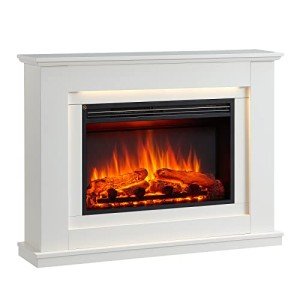Three Greatest Moments In Traditional Fireplaces UK History
The Timeless Appeal of Traditional Fireplaces in the UK
Traditional fireplaces have long been essential to homes throughout the United Kingdom, transcending simple utility to become focal points of heat, comfort, and aesthetic charm. This post explores the enduring appeal of traditional fireplaces, exploring their history, design variations, setup considerations, and their modern-day significance.
Historical Significance of Fireplaces
The fireplace has played a central function in British homes given that medieval times. Originally, they were necessary for heating and cooking. Over the centuries, with the advent of central heating and technological improvements, fireplaces have transformed into signs of heritage and design.
Secret Historical Milestones
Date
Milestone
Description
12th Century
Introduction of Chimneys
Permitted indoor fireplaces to be typical, enhanced ventilation.
16th Century
The Renaissance influence
Fireplaces ended up being more ornamental, reflecting the age's styles.
18th Century
The Georgian Era
Established complex mantels made from wood and stone.
19th Century
Victorian Era
Introduction of cast-iron and tiled fireplaces.
20th Century
Decrease and Modern Design
Shift towards gas and electric, with some revival of traditional styles.
Types of Traditional Fireplaces
While contemporary designs focus on minimalism, traditional fireplaces often exhibit complex workmanship and historical significance. Here are some popular kinds of traditional fireplaces commonly discovered in the UK:
Open Hearth Fireplaces
- Characterized by a large opening and generally built from brick or stone.
- Supplies a cozy ambiance and the noise of crackling flames.
- Needs a correct flue to redirect smoke outdoors.
Wood-Burning Stoves
- Confined systems that burn wood for heat, frequently including a glass door.
- More efficient than open hearths, providing much better heat retention.
- Available in numerous styles, from rustic to contemporary.
Cast Iron Fireplaces
- Popular in the Victorian era, known for elaborate designs.
- Long lasting and renowned for exceptional heat conduction.
- Generally function intricate patterns or themes, boosting visual appeal.
Tiled Fireplaces
- Typically decorated with ornamental tiles, these fireplaces display artistic flair.
- Typical in the 19th century, tiles can include scenes or flower styles.
- Usually paired with wood or cast iron elements.
Marble Fireplaces
- Distinguished for their beauty, these fireplaces are generally personalized.
- Marble uses a glamorous finish and matches numerous interior styles.
- They require careful setup due to their weight.
Table: Comparison of Traditional Fireplace Types
Fireplace Type
Heat Efficiency
Visual Appeal
Maintenance Needs
Fuel Type
Open Hearth
Low
High
High (chimney cleansing)
Wood
Wood-Burning Stove
High
Moderate
Moderate (wood supply)
Wood
Cast Iron
High
High
Low
Wood/Gas
Tiled
Moderate
Very High
Low (if non-usable)
N/A
Marble
Moderate
Really High
Moderate
N/A
Considerations for Installing a Traditional Fireplace
Installing a traditional fireplace can boost a home's character however features specific considerations. Here are some points homeowners need to bear in mind:
Building Regulations: Always inspect regional building regulations and regulations. Setup may require permission, specifically if structural modifications are needed.
Material Selection: Choose materials that match the home's architecture and personal style. Consider usefulness together with visual appeal.
Ventilation: Ensure proper ventilation through a chimney or flue to prevent smoke and gases from accumulating indoors.
Security Precautions: Install carbon monoxide gas detectors and guarantee all security measures remain in place, particularly if using wood-burning choices.
Expert Installation: Engage a certified contractor to make sure safe and effective setup, complying with security requirements.
Advantages of Traditional Fireplaces
In spite of the increase of modern heating services, traditional fireplaces remain beloved for a number of reasons:
Aesthetic Charm
- Includes character to any space.
- Serves as a social centerpiece, improving events.
Mental Comfort
- Provides heat not simply physically however emotionally.
- Creates a cozy atmosphere suitable for relaxation.
Worth Addition to Property
- Boosts the appeal of a home to potential buyers.
- Frequently increases property value due to their desirability.
Environmental Considerations
- Wood can be a renewable resource when sourced sustainably.
- Traditional fireplaces can contribute less to energy expenses compared to electric systems.
Frequently Asked Questions (FAQs)
1. Are traditional fireplaces energy efficient?
While traditional fireplaces might not be as energy-efficient as modern heating unit, enhancements in style, such as the installation of glass doors, can improve their performance. Wood-burning stoves are particularly understood for being more effective than open hearths.
2. How typically should traditional fireplaces be cleaned?
Chimneys ought to be checked and cleaned up at least as soon as per year, especially if the fireplace is used routinely. This avoids creosote buildup, which can result in chimney fires.
3. Can I use a traditional fireplace for gas heating?
Yes, traditional fireplaces can typically be transformed to utilize gas. This involves installing a gas line and might need a conversion package depending upon the fireplace design.
4. What are Fireplace Retailers UK fuels for wood-burning fireplaces?
Experienced woods such as oak, hickory, or maple are recommended for wood-burning fireplaces as they burn hotter and longer than softwoods.
5. Can traditional fireplaces be utilized in modern homes?
Absolutely! Lots of modern styles include traditional elements, enabling a harmonious mix of styles. Furthermore, traditional fireplaces can include a distinct touch to contemporary homes.
From their historic significance to their modern-day significance, traditional fireplaces stay a quintessential feature in many UK homes. Their enduring popularity is not just rooted in their functionality but likewise in the warmth and charm they use. Whether one choose a classic open hearth or a beautifully tiled fireplace, the option contributes to producing an inviting environment where memories can be made. As house owners end up being more conscious of aesthetic appeals and nostalgia, traditional fireplaces are poised to keep their allure for generations to come.
